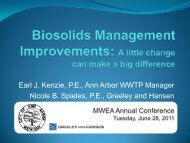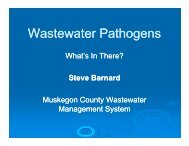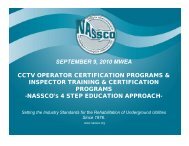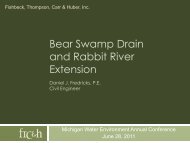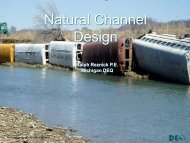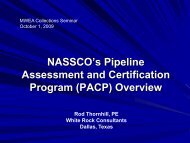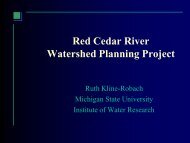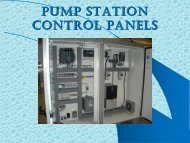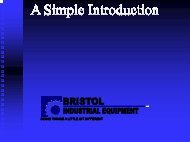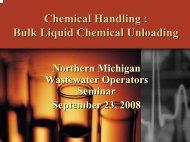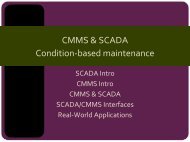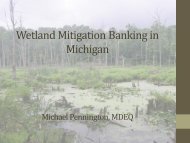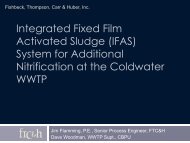Conference - Michigan Water Environment Association
Conference - Michigan Water Environment Association
Conference - Michigan Water Environment Association
Create successful ePaper yourself
Turn your PDF publications into a flip-book with our unique Google optimized e-Paper software.
Figure 6: Overloaded<br />
Clarification & Thickening<br />
Figure 7: Settling Columns<br />
CONCLUSION<br />
This article outlines the concept of<br />
SPA and how it can be used by designers<br />
for capacity analysis and by operators<br />
for solids inventory control. The SPA<br />
approach uses site specific settleability<br />
data to predict clarifier performance<br />
fairly accurately, provided there are<br />
no hydraulic inefficiencies. If such<br />
constraints are present, it is likely that<br />
clarifier failure would occur sooner than<br />
predicted by the SPA. The engineer’s<br />
goal should be to use good design<br />
practices in the design of final clarifiers.<br />
However, poor sludge settleability can<br />
curtail the operating range of even the<br />
best of clarifiers. Operators should<br />
strive to attain the best settleable<br />
sludge practically possible under their<br />
operating conditions. Doing so will<br />
ensure stable clarifier operation over a<br />
wide range of operating scenarios.<br />
Finally, other methods similar to SPA<br />
(such as the Daigger Operating Chart<br />
and Ekama Approach) are also available<br />
for clarifier analysis.<br />
MWEA MATTERS: FALL 2005 53



